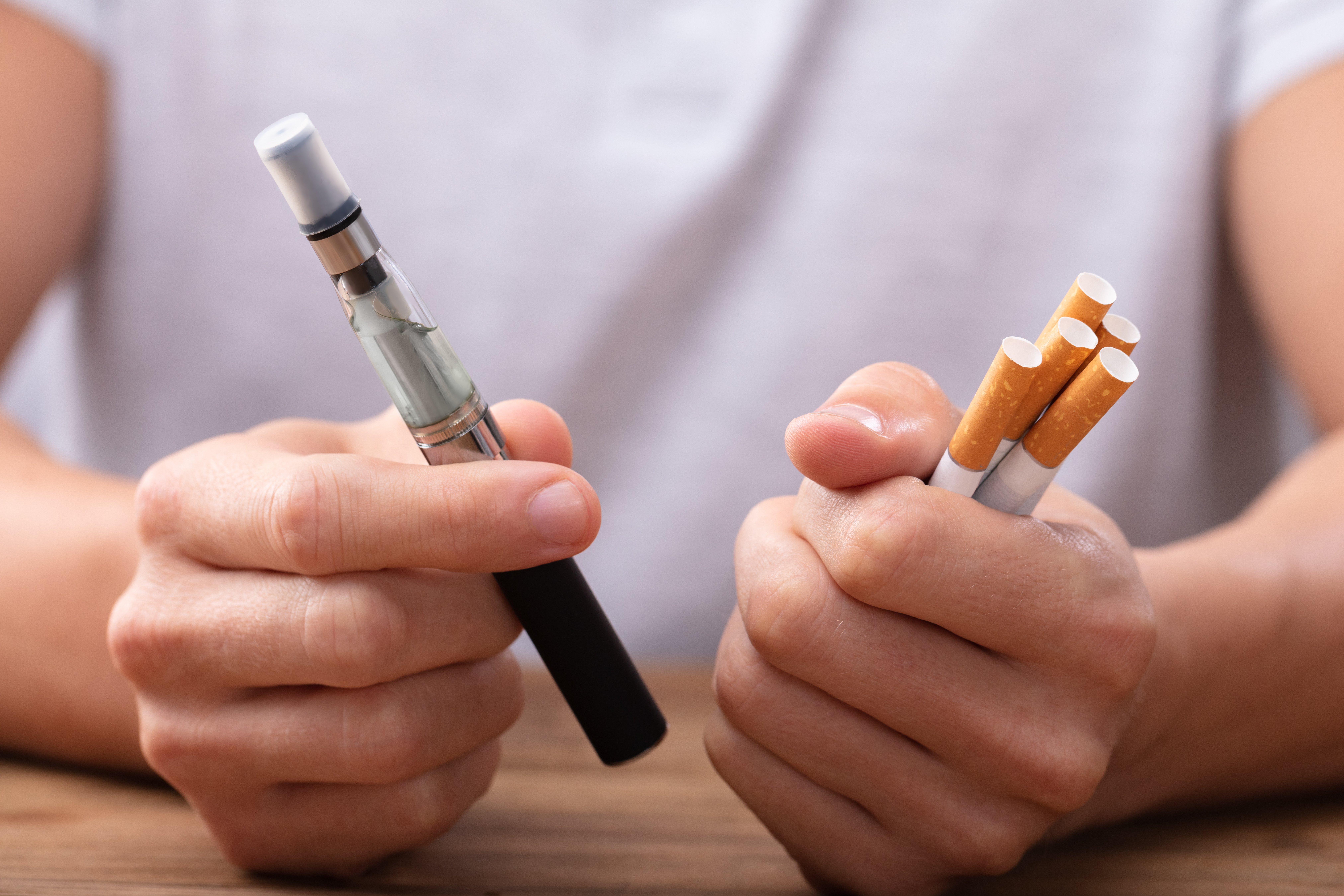
How Much Nicotine Is in a Cigarette & Other Tobacco Products vs. NRT?
Quitting smoking can be a difficult process, whether you’re a pack-a-day smoker or rely on an e-cigarette. Knowing how much nicotine is in various tobacco products can help you understand why it’s so difficult to quit smoking or using other forms of tobacco, as well as how NRTs can help you manage your cravings.
What Is Nicotine?
Nicotine is a highly addictive chemical compound that is naturally present in the tobacco plant.1 As a result, all tobacco products, including cigarettes, cigars, smokeless tobacco and most e-cigarettes contain nicotine.1 This chemical compound changes the brain’s chemistry, causing cravings for more of it, and leading to chemical dependency that can be hard to break.
How Much Nicotine Is in a Cigarette?
The amount of nicotine in a cigarette can be wildly different when looking at different brands. In fact, the average amount of nicotine in a single cigarette can range from about 6mg to 12.6mg.2 On the very high end of the spectrum, a single cigarette may contain nearly 28mg of nicotine.2 These differences in nicotine amounts may be attributed to the length and size of each brand of cigarette, which determines the amount of tobacco that may be contained within.2 Since the cigarette will continue to burn even when you’re not actively inhaling, you won’t inhale the full amount.2 Instead, you’ll only inhale 1.1 to 1.8mg of nicotine for every cigarette you smoke.3 If you smoke a pack of cigarettes, you’re likely to have inhaled between 22mg and 36mg of nicotine.3
How Much Nicotine Is in Other Tobacco Products?
While there’s no denying the harm that can come from smoking cigarettes, other tobacco products also contain nicotine, which means they can be just as addictive:2,3
- Cigars. Contain an average 13.3mg of nicotine in each cigar.
- Mini cigars or cigarillos. These may come individually wrapped or in a pack. Typically, each mini cigar contains 3.8mg of nicotine while the entire pack has 76mg.
- Pipe. Each packed bowl of pipe tobacco contains an average of 5.2mg of nicotine.
- Chewing tobacco. This refers to the traditional tobacco found in a dipping can. While the amount of nicotine that each person absorbs into their system may vary based on the amount of dip they use at once, the entire can typically contains 88mg of nicotine.
- Loose leaf tobacco. Each pouch contains an average of 144mg of nicotine.
- Hookah or water pipe. Hookahs are smoked over a period of time, typically as a social activity. One session, lasting 45-60 minutes, can have the same amount of nicotine as a pack of cigarettes—22 to 36mg.
How Much Nicotine Is in E-Cigarettes?
Many tobacco users have turned to e-cigarettes as an alternative to smoking cigarettes. These plastic devices were developed to deliver nicotine without the toxins associated with cigarettes.4 There are a number of brands and products on the market that convert nicotine to a vapor that can be easily inhaled, and they are generally labelled according to their nicotine content as “extra strong/very high,” “strong/high,” “regular/medium,” “light/low,” “ultra-light/very low” and “zero/no nicotine.”4 However, traces of nicotine have been found in e-cigarette cartridges labelled “no nicotine,” which indicates that the information on packaging about nicotine levels may be purposely misleading.4 It can be assumed that 15 concurrent puffs of an e-cigarette are the equivalent of smoking a cigarette, and the total level of nicotine generated after 15 puffs has a range of 0.5mg to 15.4mg, depending on the nicotine content.4 An important takeaway is that even at its lowest nicotine level, e-cigarettes still contain the addictive substance.
How Much Nicotine Is in NRT Products?
Nicotine replacement therapy (NRT) seeks to reduce a person’s motivation to consume tobacco and the mental, physical and emotional withdrawal symptoms through delivery of a controlled amount of nicotine.5 Many clinical guidelines recommend NRT as a first line treatment for people seeking help to stop smoking or using tobacco products.5 There are a few types of NRT medications that are available over the counter to help you quit smoking: gum, lozenges and patches. These products are therapeutic forms of nicotine and are intended to help you manage your withdrawal symptoms as you quit smoking. Knowing how much nicotine is in the tobacco products you previously used can help you choose the NRT products that are right for you so that you can taper your usage correctly:6
- Nicorette Gum comes in a variety of flavors and helps to provide relief for the oral fixation commonly associated with smoking. This gum is available with either 2mg or 4mg of nicotine, per piece of gum.
- Nicorette Lozenges are meant to discreetly dissolve in your mouth over time. They are available in 3 different varieties, and each lozenge contains either 2mg or 4mg of nicotine.
- NicoDerm CQ Patches uses a clear patch to release a steady flow of nicotine throughout the day to help manage cravings. There are three different strengths that allow a user to taper their nicotine dependency. The strongest patch delivers 21mg of nicotine during the course of the day. The middle patch has 14mg of nicotine. And the patch with the least amount of nicotine contains only 7mg.
Choose the NRT products and medications that work for your needs and nicotine addiction to help you kick the habit for good.



